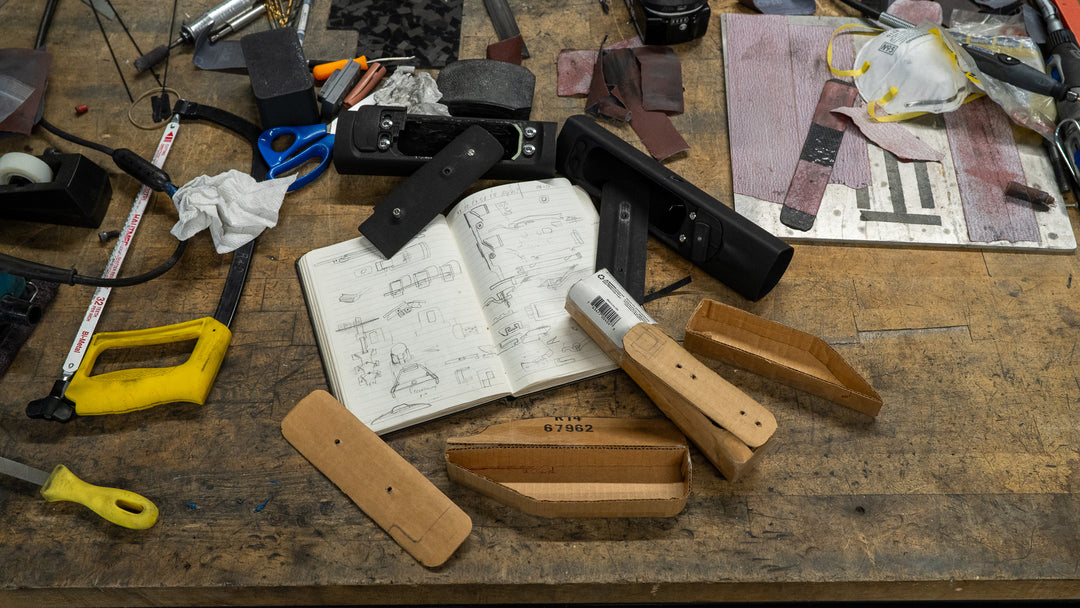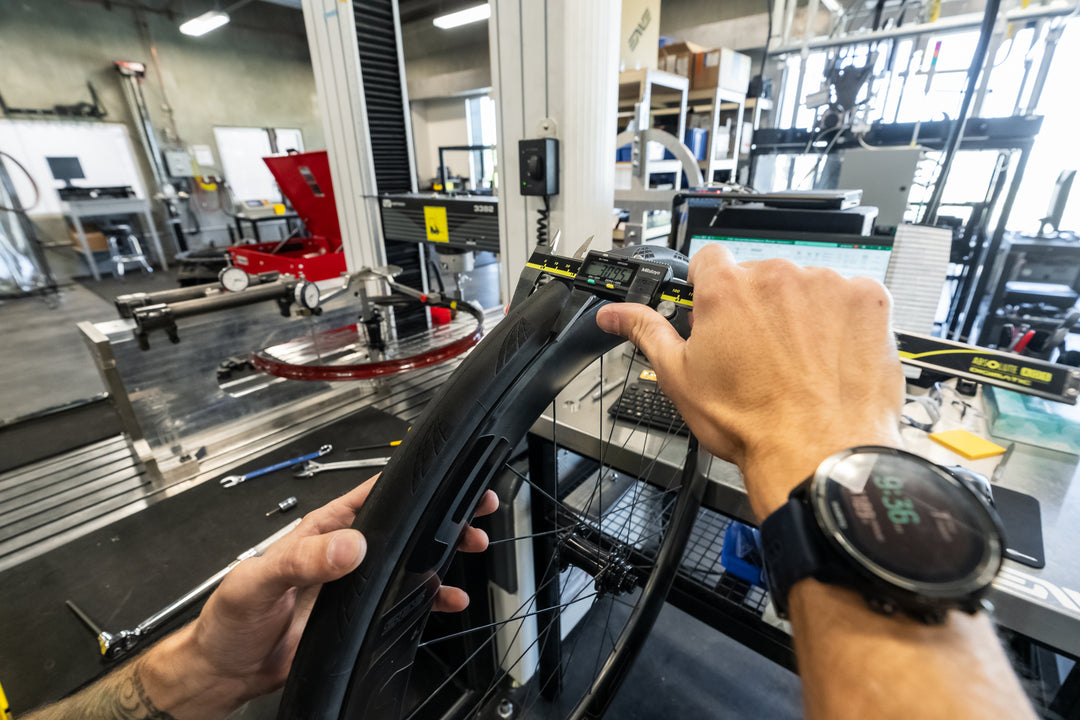Tubeless Flat or Puncture - Now What?
Every bike can benefit from a tubeless tire and wheel combination. Road bikes, gravel bikes, and mountain bikes all gain improved traction, reduced rolling resistance, and have far less a chance of flatting from trail or road debris when setup tubeless. Nearly every ENVE wheelset is designed to be setup tubeless to benefit from the above mentioned performance benefits. Do you still not trust tubeless? Check out our Tubeless Misconceptions article to dispel any myths you might have heard.
Although it’s rare – flat tires while running tubeless can happen. Flatting or puncturing a tire while setup tubeless isn’t the end of the world, or even the end of your ride.
To combat the dreaded tubeless pinch-flat, wheels like the SES 3.4 AR, G23, G27 and M Series feature anti-pinch flat technologies that are built into the rim. Each technology aims to dissipate energy from impacts across a larger area to prevent cutting the tire against the rim. The “Wide Hookless Bead” is a lightweight technology for road, gravel, and mountain bike applications and reduces tubeless pinch-flats by 50%. The “Protective Rim Strip” is found on M7 and M9 Series wheels and completely eliminates the possibility of pinch-flatting. Each technology is created to best meet the needs of riders in their specific discipline.
Fortunately, aside from preventative technology for flatting, there’s quite a few options for you to quickly resolve the flat, and get rolling again quickly.
SEALANT FIX
• One of the benefits of tubeless is the ability of the liquid latex within the tire to find a hole, and seal it completely. Often, you’ll see sealant coming out of the hole or puncture in the tire. Rotating that hole downwards will allow gravity to take effect with sealant to help seal it faster. Sometimes, the hole will seal instantly, and almost no air-pressure will be lost. If the seal does take a bit more time to seal, it’s wise to pull out your pump or inflation tool to refill the tire with any lost pressure.
• Tires that have been sealed in this fashion are often still OK to keep riding for the remainder of the tire’s life. Liquid latex does a tremendous job of keeping a tire sealed long after initially filling the puncture hole.
• This is the most common type of fix, and should be your first resort before trying different methods.



PLUG FIX
• If the hole in your tire is larger than what the sealant or liquid latex will fill, often a plug will work just as effectively. The plugs are inserted directly into the hole in the tire, as directed by the plug manufacturer. These small rubber pieces quickly attach themselves to the sealant within the tire to seal the hole. Very similar to the ATV, Motorcycle, and even Automotive industry, these plugs work quickly and effectively. After the hole is sealed, it’s best to pull out your pump or inflation tool to refill the tire with any lost pressure.
• Tires repaired using plugs will more often than not, continue to perform for the remaining life of the tire. The combination of liquid latex and a plug will keep a tire sealed long after initially plugging the puncture hole.
• This type of fix should be your second resort after trying to use the sealant within the tire to fill the hole, but before resorting to installing a tube.




TUBE FIX
• Sometimes, no amount of sealant or plugs can stop a tire from losing air. The odd piece of glass or nail in the road can create a hole and puncture in the tire that exceeds the amount of sealing power of liquid latex or plugs. Not to worry, however, as putting in a tube on a tubeless setup wheel and tire is nearly identical in process to the old-fashioned way of repairing a flat.
• First – push the tire bead on each side into the center trough of the rim. This first step will make every following step dramatically easier, as tubeless wheels have higher tolerances for maintaining a tubeless seal on the rim than standard hook-style clincher.

• Next – you’ll need to remove the valve from the rim. Start by un-threading the valve nut on the spoke-face of the rim. Remove the valve, but note that this valve is still usable for future tubeless setups, and should not be discarded.



• Pull one side of the tire bead over and off the rim, while keeping the other bead inside the center trough. Be sure to identify what caused the flat and remove it before inserting the new tube into the tire. Use a rag or sleeve to feel the inside of the tire for the cause of the flat and use caution. Using your hand will likely cause injury – especially if the flat was caused by glass or a rusty nail.
• If the hole is large enough, it is wise to use some sort of tire boot that will help support the tire, and keep the tube from protruding through too large of a hole. A dollar bill or used gel packet will work well as a tire patch.



• Insert the valve of the tube into the valve hole, and install the tube into the tire. Be careful not to spill the remaining liquid latex within the tire, as it can help prevent flats on tubes as well, and the latex is prone to staining clothes. Pull the bead of the tire back over the rim wall, and start opposite of the valve. Starting in this position, and keeping the tire beads in the very center trough of the rim channel will make tire reinstall dramatically easier. Be sure to finish right at the valve. While this may be the opposite of what you’ve done in the past, it works to allow more room for the tire to slide over the rim sidewall and into the rim channel. Creating more space is critical on tubeless tires that have stiffer beads than non-tubeless tires.







Tubeless on any wheel application provides a host of performance benefits. They can still flat, however, and as we’ve pointed out above – these punctures can be fixed road or trail side quickly and easily to keep you riding.
For any more questions, feel free to reach out to us at support@enve.com or 1-877-358-2869




